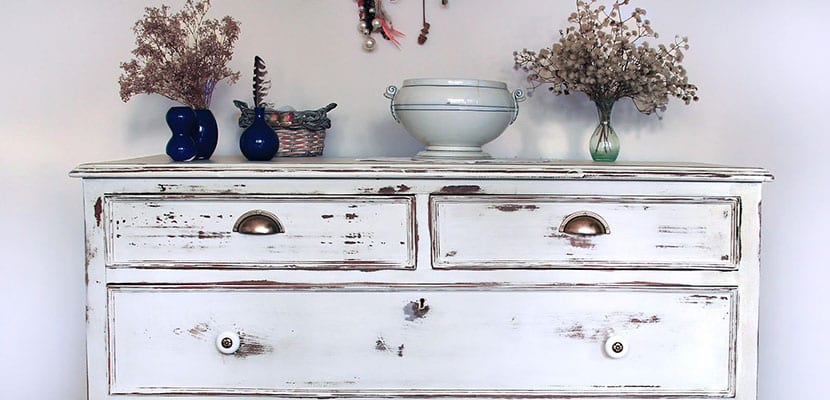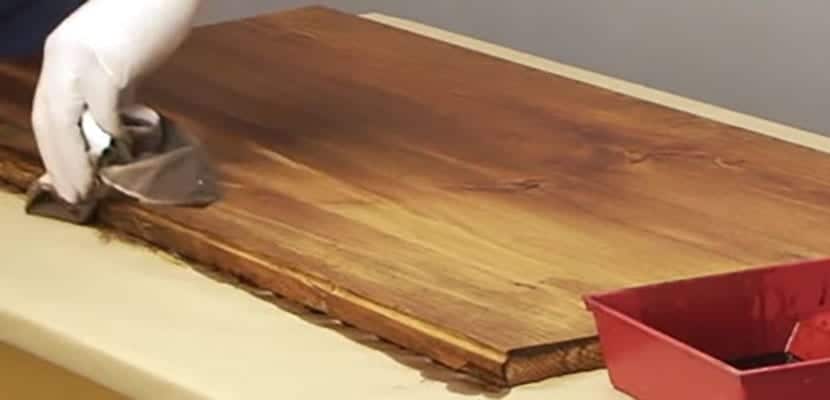
Sometimes we have old wooden furniture at home to which we give a new, more modern touch with paint. But we also have the opposite side, with people who have newer furniture and want to give it that patina over time that makes it so special. Aging wood to change a piece of furniture is also a fairly common process, so we are going to see how to do it in a few steps.
We must be clear about the materials that we must buy and in what state the furniture to be able to age the wood. This antique touch is ideal if we want to have a space that has a vintage or classic touch. In addition, we can always paint the furniture later to re-modernize it.
Why age wood
The wood of aged look it has something special. It is possible to imitate the passage of time on the wood of a piece of furniture that is new to give it that character that only the oldest pieces of furniture have. Not everyone can boast of having furniture that adds decades to their backs, so in the worst case scenario we can always imitate this antique with some DIY materials on a beautiful wooden furniture that has a classic style. This type of furniture will look great in vintage-style rooms, in classic rooms or those with old-fashioned touches.
Materials for aging wood

To age the wood we will need at least the following materials. It is necessary to have an electric sander and a soft sandpaper for other touch-ups. In addition, we will need solvent, water, furniture stain and Judean bitumen. You also have to get hold of rags, brushes, gloves and, if possible, glasses so as not to suffer any damage to the eyes. We may have to purchase other materials to give it a personal touch, such as old handles, wheels or nails and rags to create notches in the wood and give it that touch of used over the years.
How to age wood
Aging wood is a fairly simple process for anyone, although we do not have many notions of making crafts or DIY. Of course, to have the furniture in a position to be used we must know how to use an electric sander. It is important that the furniture has no paint, and if it does, we must remove it with solvent. The wood must be sanded in the direction of the grain for it to look good. Once we have the furniture with the bare wood, it will be ready so that we can work with it.
The first step to give it that patina of passage of time is using wood stain. It is important to know how to use it. With this dye we will give it a lighter or darker color depending on the amount we apply. That is why we should go little by little applying only a layer or two if that is what we want, to without going through a site more than once, because we can have several shades if we put more product in one area than in another. . If we see that there is some product left over or there are drops, we should not pass the brush again, but remove it with a clean cloth with which we will help ourselves so that the dye remains uniform on the wood.
We will let the wood stain dry and then we will apply the Judean bitumen. It is this bitumen precisely what gives it that aged look that only furniture has that has accumulated dust or dirt over time. It gives it dark touches in certain areas so that it looks aged. It should be mixed with turpentine and applied with a brush and removed little by little with a cotton ball so that the right product remains to give that aged touch.
Aged furniture with paint

It is also possible to give an aged touch to a painted wooden furniture, creating some worn effect on the wood. On the one hand we can simply use a soft sandpaper to abrade the paint that has the furniture. This will make the paint look damaged over time. We must do it little by little, then removing the dust with a cloth.
On the other hand, we can start from bare wood to add textured paint. In this case, a tone that is light is applied in the first layer. It is applied well so that it paints the entire piece of furniture, this time evenly. Let it dry well for a few hours, as we will then apply a totally different color on top. In the second tone we can use a color that we like but that contrasts with the first. For a vintage piece of furniture, pastel tones are sought above all that are matte, but any tone that we like can be used. On this occasion we must make irregular brushstrokes, in which there may be areas with less product than others, so that the color of the background can be seen. This contrast is what will give the furniture a slightly worn look.